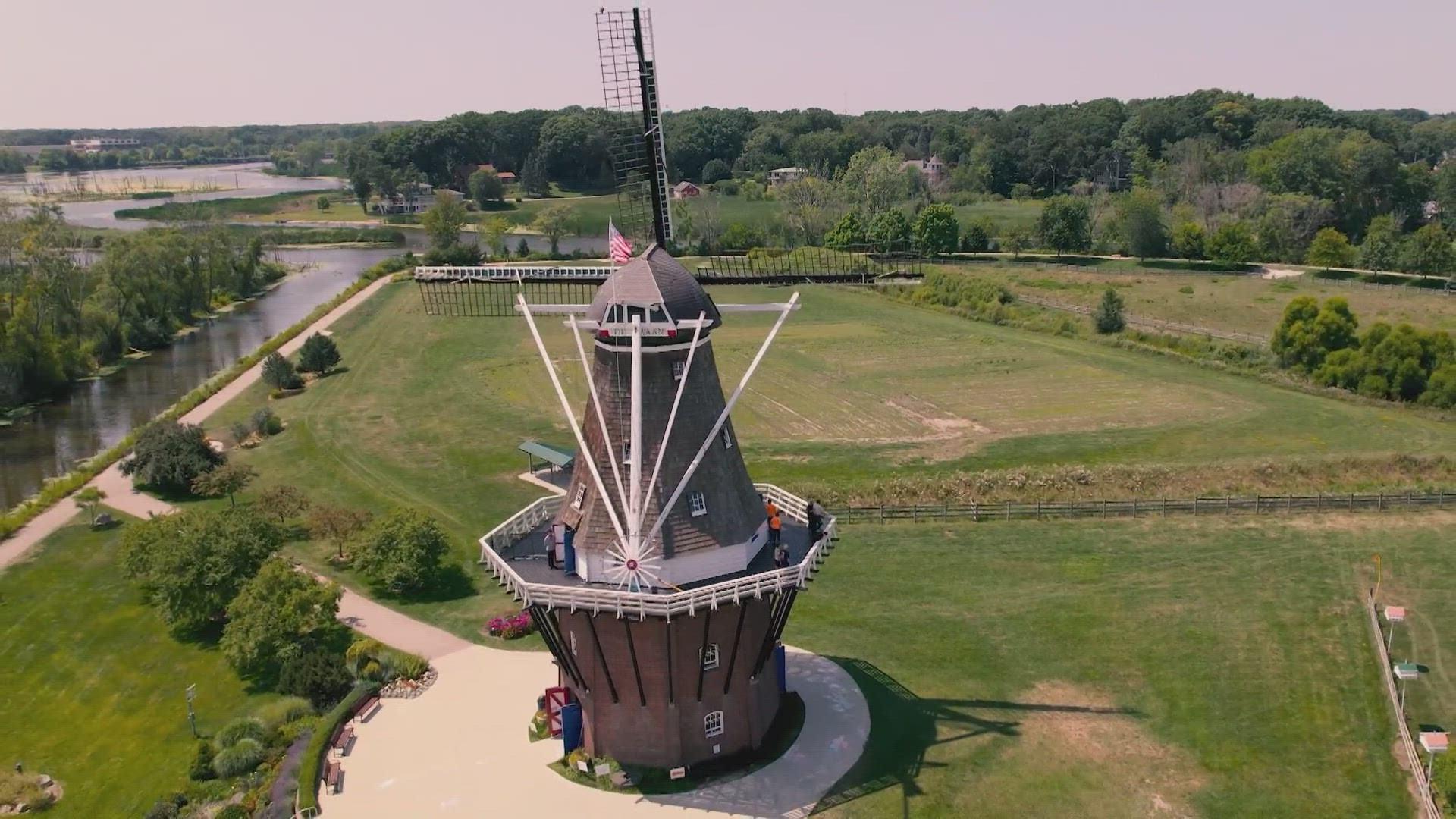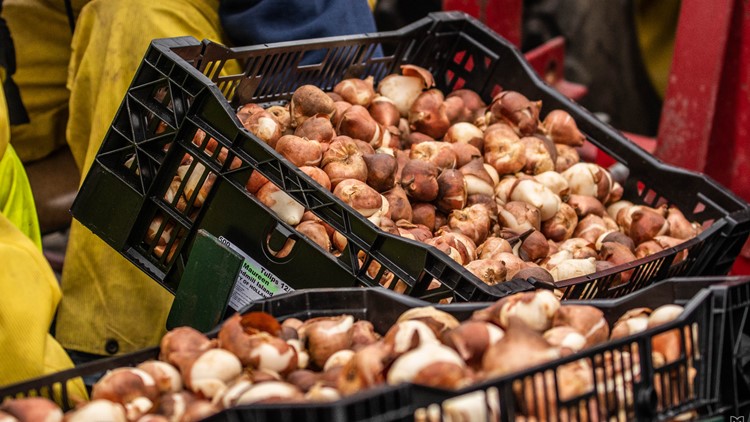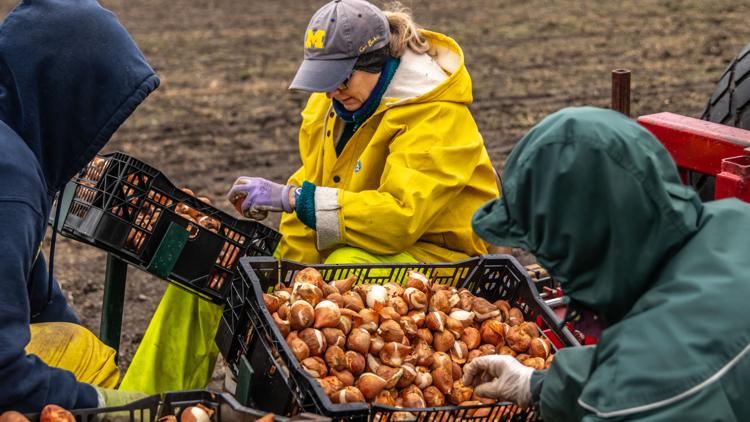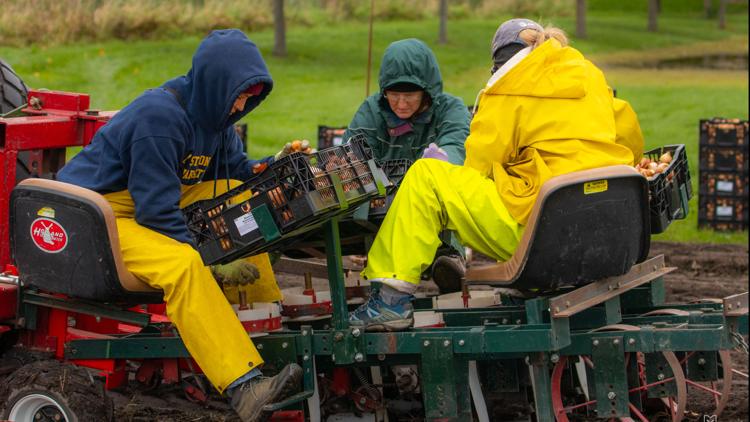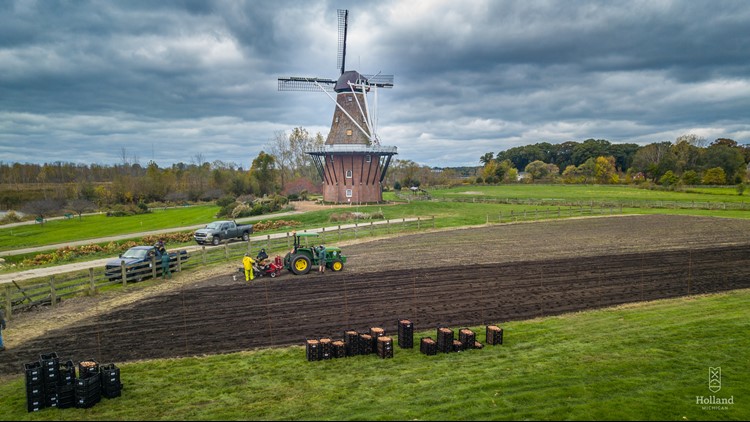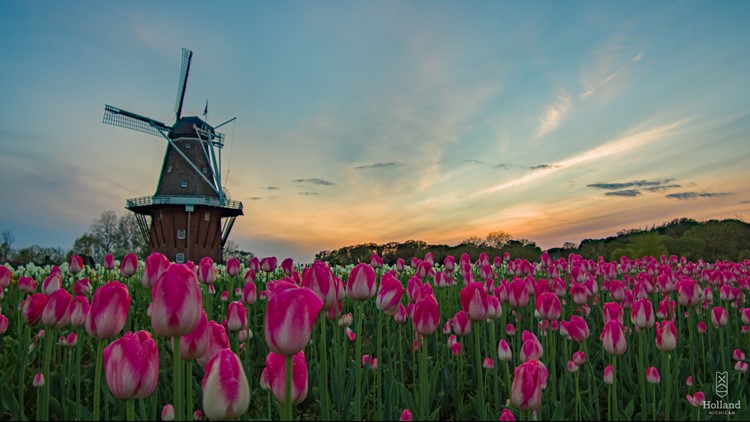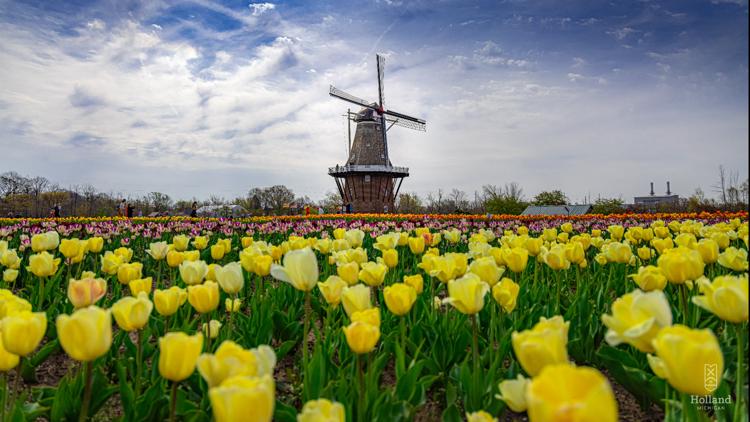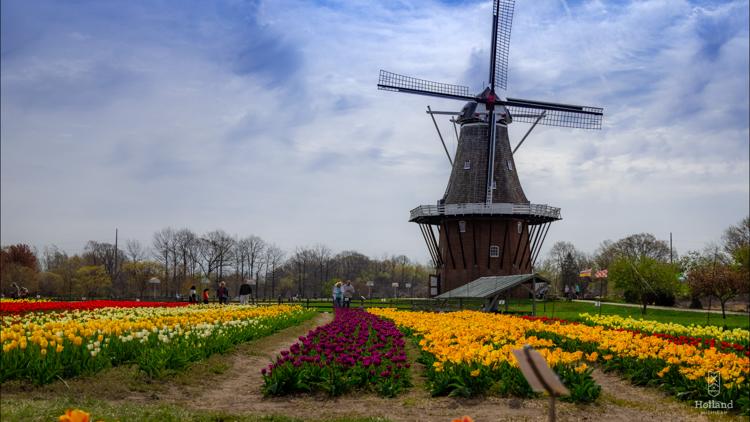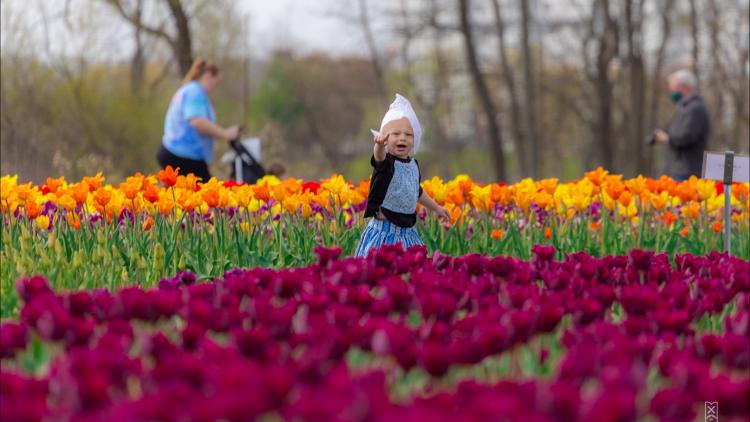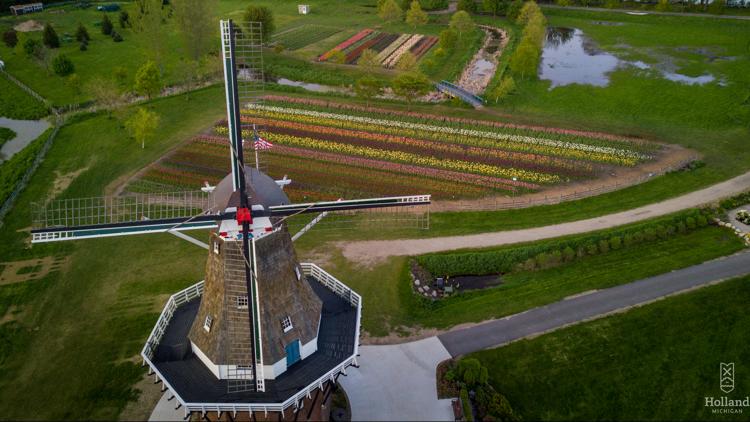HOLLAND, Mich. — Holland, Michigan, is well known for its annual Tulip Time Festival. In late April and early May, hundreds of thousands of beautiful, blooming tulips make this southwest Michigan town a beautiful destination and one of America's great spring attractions.
The city was settled in 1847 by Dr. Albertus Van Raalte and his Dutch Calvinist congregation. Since then, this part of Michigan has strongly retained its Netherlands connection – especially with the strength of the Dutch Reformed and Christian Reformed church here. Nowhere is this more evident than at one of Holland's most visited destinations, Nelis' Dutch Village. For Joe Nelis, it's a family tradition that has been a huge part of his life for as long as he can remember.
"Last year, we celebrated 100 years in business in Holland, Michigan. My great grandfather bought some property in 1922, became a tulip farm, and we operated the tulip farm all the way through 'til 1978. This business here started in 1958. So, this is our 65th year of operating this property right here," Nelis said. "There was a lot of immigration here for a long, long time. I think nowadays, we're multicultural, much like the whole of the United States is, but we still have, you know, generations, you know, like I'm a third generation American now. My grandfather came from the Netherlands."
Windmill Island Gardens tulips
Dutch Village celebrates traditional food, dance, and art, as well as amusement rides and a petting zoo for children. The hook here is the culture. Demonstrations go on all over the park during the day. It's the real deal, and, according to Nelis, it's designed that way.
"Historically, kind of our theme was a step back into the Netherlands well over 100 years ago. We would do everything from wooden shoe carving to delve pottery, making cheese, making demonstrations, all the old Dutch crafts," Nelis said. "We've kind of now brought family fun into the mix because now we say it's step back into the Netherlands over 100 years ago on a day when a festival came to town. So now we have the Ferris wheel, the swing ride, the carousel, all the rides for the kids. We mixed together the educational and the fun aspects."

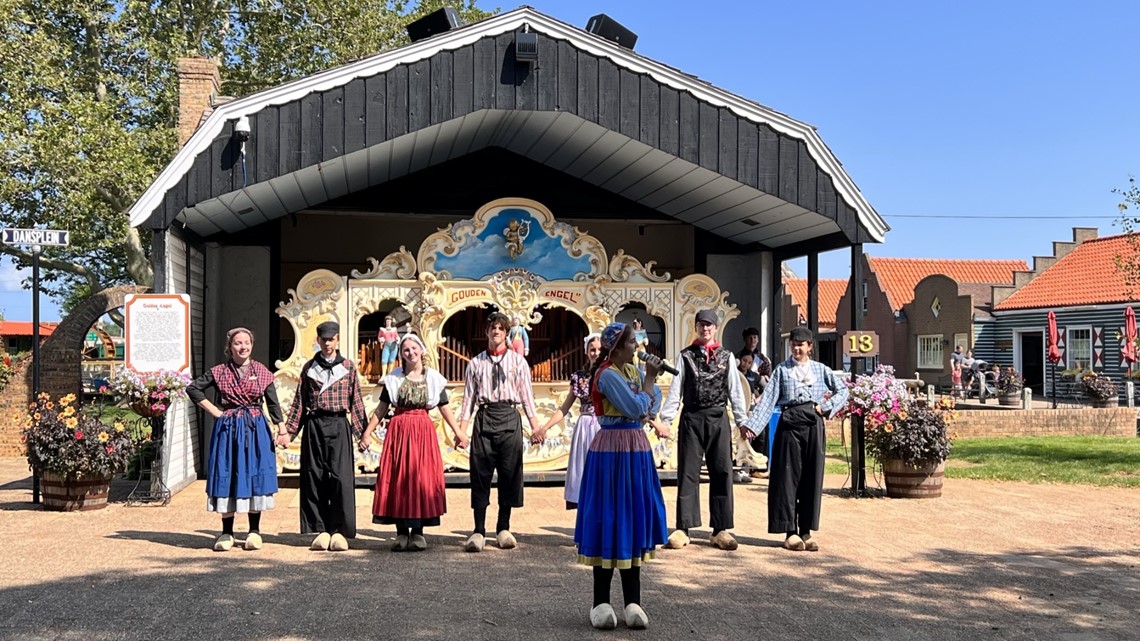
Aike Niehof fills the educational part of the park. Born in the Netherlands, he keeps alive the centuries-old tradition of carving wooden shoes. We are used to seeing those shoes worn in old pictures and artwork, but some Holland residents still wear them. Niehof not only wears them, but he is one of the few wooden shoe carvers still around in the country. He loves showing guests how it's done.
"When I was a little boy over there, my mom never sent me to school with wooden shoes, I had leather shoes, but I used to like to have a little pair of (wooden) shoes. Of course, I used to love to dig so I could double clutch the shovel. That way, I wouldn't hurt the foot," Niehof said. "Farmers liked it when they were milking cows. What if they stepped on a shoe? Basically, they were actually, you know, it wouldn't hurt the foot."
After Niehof's demonstration, guests often try on a pair. Most are surprised at how comfortable the shoes feel on their feet. Since they are made of poplar, they are pliable and fit well to the arch in a foot.

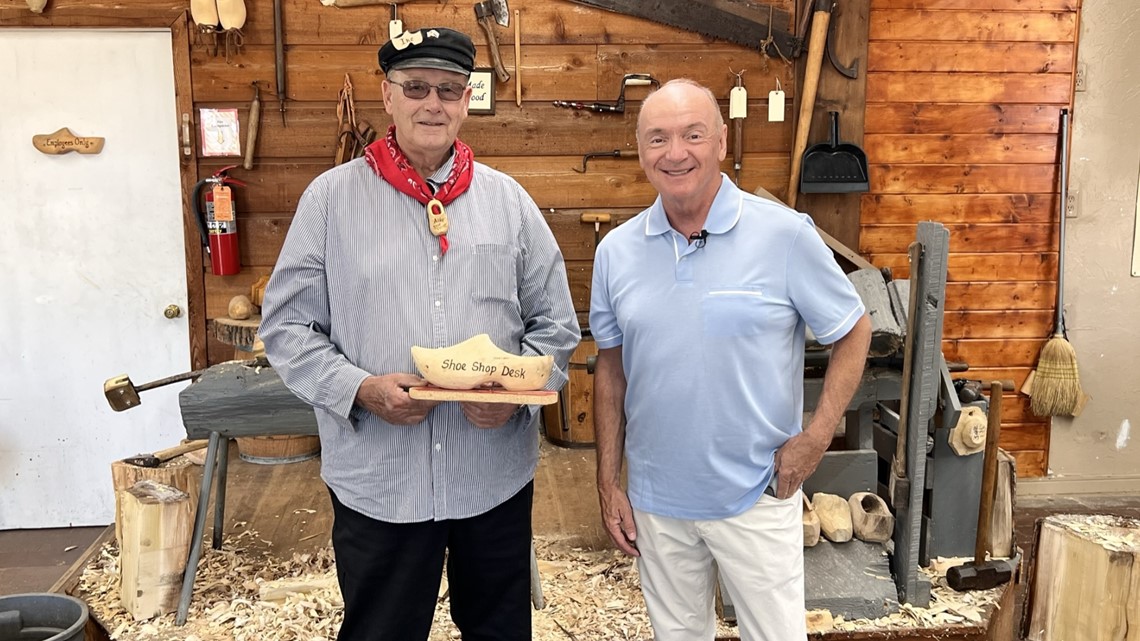
At nearby Windmill Island Gardens, it's easy to picture yourself 4,000 miles away in Amsterdam. This municipal park is home to the 251-year-old windmill DeZwaan, the only authentic, working windmill in the United States. The view is breathtaking. This windmill is huge and very impressive to first-time guests, who can climb to the observation deck near the top of the mill. Matt Helmus works here every day and loves telling the story of how this windmill made it all the way to this little corner of Michigan.
"It's a great story. The city fathers back in the early 20th century with the town named Holland and a lot of Dutch immigrants, they thought, how can we show off that heritage when people come and say, 'I'm in Holland, where's the Dutch stuff? They thought, what better than a windmill from the Netherlands?" Helmus said. "So, the Dutch government allowed the city of Holland to purchase the last windmill allowed to be brought from the Netherlands to America because now they value them as historic heritage artifacts just like we do. So, we got the last one, thanks to our Dutch heritage connection."


The upkeep costs are considerable, but the windmill has been a landmark for this city since 1964, and it's been the focus of photography, paintings, tourism and in a very real way, is the symbol of the town. Just seeing the windmill is a thing of beauty, but most guests want to see it turn. That is not always possible, according to Helmus.
"A lot of times we get asked, 'Are you going to turn?' or 'When are you going to turn?' And that's always hard to predict because it's based on several things. It's based on the weather. It's based on having a miller here to do that. It's based on whether a grain bin is full. So, it's always we like to turn as often as we can," Helmus said. "So, we say, 'If there's good wind, we hope one of our millers is here and they can get turning that day.' We get a lot of questions, too, of 'Does that thing work?' or 'Why don't you turn it on today?' And that, we know, is an educational opportunity that we don't use power to run the windmill."

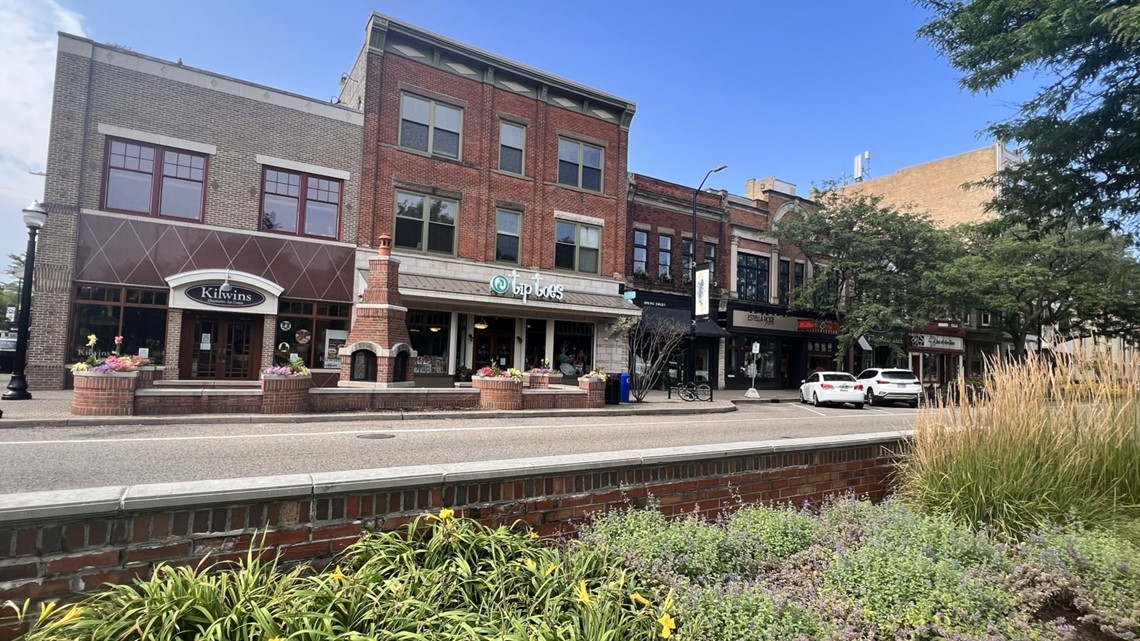
Right now, there are four people actually able to work the complex mechanism and on occasion, you'll see the windmill actually mill grain. The island is part of a 36-acre park and includes beautiful replicas of Dutch buildings, and you just may catch high school students doing the traditional Dutch dance. Most visitors come during Tulip Time but at any time in the summer or fall, beautiful annuals are planted all over the park.
Windmill Island Gardens is a place to catch the best of Holland just three hours from Indianapolis.

